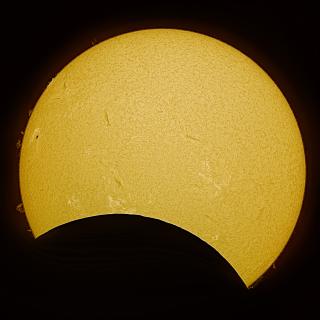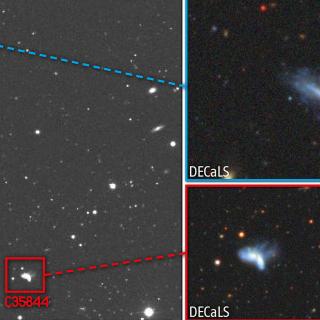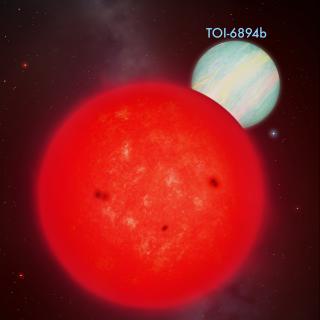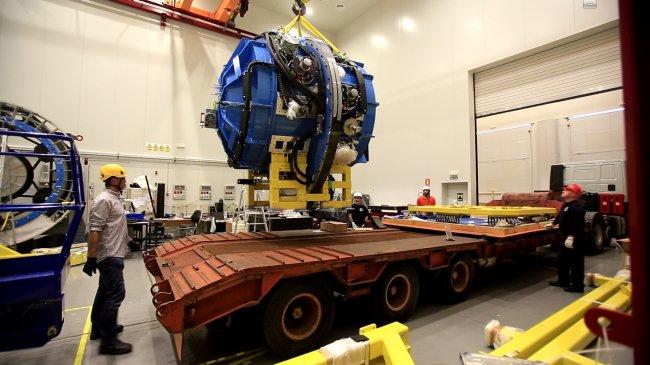It may interest you
-
 This Saturday, 29 March 2025, the Instituto de Astrofísica de Canarias (IAC) was able to follow the partial solar eclipse from the Teide Observatory in Tenerife. Although subtle to the naked eye, this eclipse was used by the IAC's outreach team to raise awareness of the phenomenon among a group of people from the ‘Friends of the IAC’ programme and IAC staff. At the same time, an observation was also made from the IAC Headquarters in La Laguna, which could be seen live on the centre's YouTube channel. The eclipse began at 09:14 UT and ended at 10:56 UT, with its maximum at 10:03 UT. For justAdvertised on
This Saturday, 29 March 2025, the Instituto de Astrofísica de Canarias (IAC) was able to follow the partial solar eclipse from the Teide Observatory in Tenerife. Although subtle to the naked eye, this eclipse was used by the IAC's outreach team to raise awareness of the phenomenon among a group of people from the ‘Friends of the IAC’ programme and IAC staff. At the same time, an observation was also made from the IAC Headquarters in La Laguna, which could be seen live on the centre's YouTube channel. The eclipse began at 09:14 UT and ended at 10:56 UT, with its maximum at 10:03 UT. For justAdvertised on -
 An international team of researchers, including researchers from the IAC, have studied in detail a remarkable couple of dwarf galaxies “dancing with each other” inside an unpopulated area of the Universe. This uncommon pair of low-mass galaxies merging “in the middle of nowhere”, near the center of a cosmic void, offers a unique view of one-on-one interactions and of the evolution of galaxies located in very low density environments. Researchers from the Calar Alto Void Integral-field Treasury surveY (CAVITY) project, led by the University of Granada, have discovered a rare and ongoingAdvertised on
An international team of researchers, including researchers from the IAC, have studied in detail a remarkable couple of dwarf galaxies “dancing with each other” inside an unpopulated area of the Universe. This uncommon pair of low-mass galaxies merging “in the middle of nowhere”, near the center of a cosmic void, offers a unique view of one-on-one interactions and of the evolution of galaxies located in very low density environments. Researchers from the Calar Alto Void Integral-field Treasury surveY (CAVITY) project, led by the University of Granada, have discovered a rare and ongoingAdvertised on -
 An international team of astronomers, including researchers from the Instituto de Astrofísica de Canarias (IAC), the University of Liège and collaborators in UK, Chile, the USA, and Europe, has discovered a transiting giant planet orbiting the smallest known star to host such a companion — a finding that defies current theories of planet formation. The host star, TOI-6894 , is a red dwarf with only 20% the mass of the Sun , typical of the most common stars in our galaxy. Until now, such low-mass stars were not thought capable of forming or retaining giant planets. But as published today inAdvertised on
An international team of astronomers, including researchers from the Instituto de Astrofísica de Canarias (IAC), the University of Liège and collaborators in UK, Chile, the USA, and Europe, has discovered a transiting giant planet orbiting the smallest known star to host such a companion — a finding that defies current theories of planet formation. The host star, TOI-6894 , is a red dwarf with only 20% the mass of the Sun , typical of the most common stars in our galaxy. Until now, such low-mass stars were not thought capable of forming or retaining giant planets. But as published today inAdvertised on
